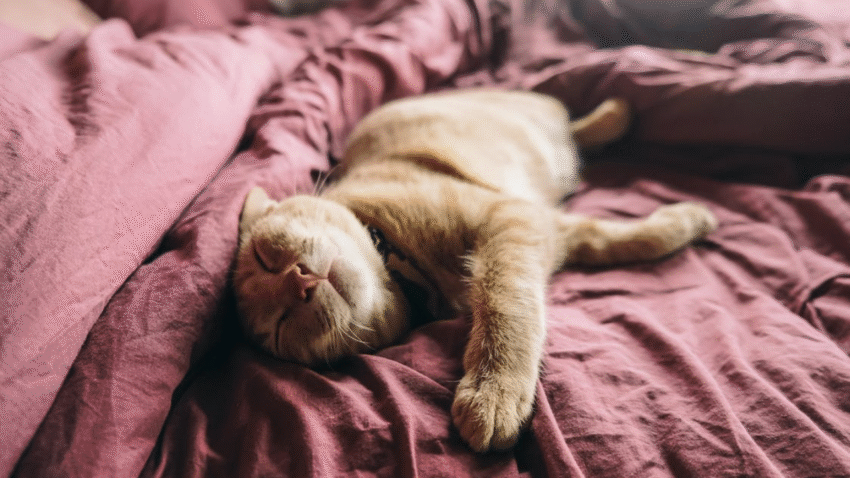Introduction
Does grooming your cat feel like a battle? You’re not alone. Many cat owners struggle with grooming because their feline friend hisses, hides, or simply refuses to sit still. But it doesn’t have to be this way. In this guide, you’ll learn how to build a stress-free grooming routine for your cat — one that both you and your pet can enjoy. With the right tools, timing, and techniques, grooming can become a relaxing part of your cat’s life.
Why a Stress-Free Grooming Routine Matters for Cats
Cats are naturally clean animals, but even the best self-groomers need a little help — especially long-haired breeds, older cats, or those with health conditions. Without regular grooming, your cat may develop:
- Matted fur or tangles
- Skin irritation or infections
- Overgrown nails
- Dirty ears or tear stains
- Shedding and hairballs
A calm, consistent grooming routine supports your cat’s health while reducing stress and anxiety — for both of you. Plus, it strengthens the bond between you and your pet by building trust through gentle touch and positive interaction.
Step-by-Step Guide to Creating a Low-Stress Grooming Routine
1. Start with Short, Positive Sessions
If your cat is new to grooming or has had bad experiences in the past, start small. Begin with a 2–3 minute session and gradually build up.
- Focus on one grooming task at a time (e.g., brushing only)
- Choose a quiet time when your cat is relaxed (after meals or naps)
- End before your cat becomes agitated
Pro Tip: Always reward your cat with a treat or praise afterward, even if you only got a few brush strokes in.
2. Choose the Right Tools for Your Cat’s Coat
Using the wrong tools can make grooming uncomfortable or even painful. Tailor your grooming kit to your cat’s coat type:
- Short-haired cats: Use a soft-bristle brush or rubber grooming glove
- Long-haired cats: Use a wide-tooth comb and slicker brush
- Sensitive cats: Try a grooming mitt or ultra-soft brush
Have cat-safe grooming wipes, nail clippers, and ear-cleaning pads on hand as needed.
3. Create a Calm Grooming Environment
The environment plays a big role in how your cat responds. Set the stage for a peaceful experience:
- Choose a quiet room with minimal distractions
- Use a towel or non-slip mat for comfort and stability
- Play calming music or use feline pheromone sprays like Feliway
- Keep your voice low and movements slow
If your cat is particularly anxious, grooming on your lap or in their favorite napping spot may help.
4. Handle with Gentle Confidence
Cats can sense nervous energy. Use calm, confident movements when grooming:
- Always approach from the side or behind — not head-on
- Use slow, deliberate strokes with the brush
- Talk softly to your cat throughout the process
- Pause if your cat shows signs of stress (tail flicking, ears back, growling)
Grooming should feel like petting — not a chore.
5. Break Tasks Into a Weekly Routine
Rather than doing everything at once, space out grooming tasks across the week. Here’s a sample routine:
- Monday – Brush back and sides
- Tuesday – Brush belly and tail
- Wednesday – Wipe eyes and ears
- Thursday – Check nails and paws
- Friday – Brush full body
- Weekend – Treat day and light check-in
By keeping sessions short and focused, your cat won’t feel overwhelmed.
6. Monitor and Adjust Based on Your Cat’s Needs
Every cat is different. Pay attention to how your cat responds and make changes if needed:
- Increase frequency during shedding season
- Adjust tools if your cat’s skin becomes irritated
- Modify the routine if your cat develops mobility issues
It’s okay to experiment — the goal is comfort and consistency.
Common Mistakes to Avoid
1. Forcing a Full Grooming in One Session
Trying to do too much at once can stress your cat and make future sessions harder. Keep it short, especially in the beginning.
2. Using the Wrong Tools
A brush that’s too stiff can scratch your cat’s skin. Choose tools designed for cats — not dogs or humans.
3. Grooming During High-Energy Moments
Avoid grooming when your cat is full of energy or in play mode. Wait for calmer moments.
4. Ignoring Body Language
Hissing, tail swishing, or trying to escape are signs your cat is overwhelmed. Stop and try again later.
5. Skipping Routine Altogether
Inconsistent grooming creates anxiety. Even 5 minutes a few times a week builds routine and familiarity.
Extra Tips & Recommendations
- Use Treats as Training Tools: Give a treat after each grooming step to create positive associations.
- Desensitize with Touch: Gently handle your cat’s paws, ears, and tail regularly so they become used to being touched.
- Try Clicker Training: You can use clicker training to reward cooperation during grooming.
- Trim Nails Before They Overgrow: Keeping nails short reduces scratching during grooming sessions.
- Consider a Grooming Partner: Some cats respond better when two people gently assist — one to comfort, the other to groom.
Conclusion
Building a stress-free grooming routine for your cat takes time, patience, and trust — but the rewards are well worth it. Not only will your cat look and feel better, but you’ll also enjoy a stronger bond through regular, positive interaction. Remember to go slow, keep it gentle, and make grooming a routine your cat can count on. With consistency and care, even the most nervous feline can learn to love grooming time. 🐾
